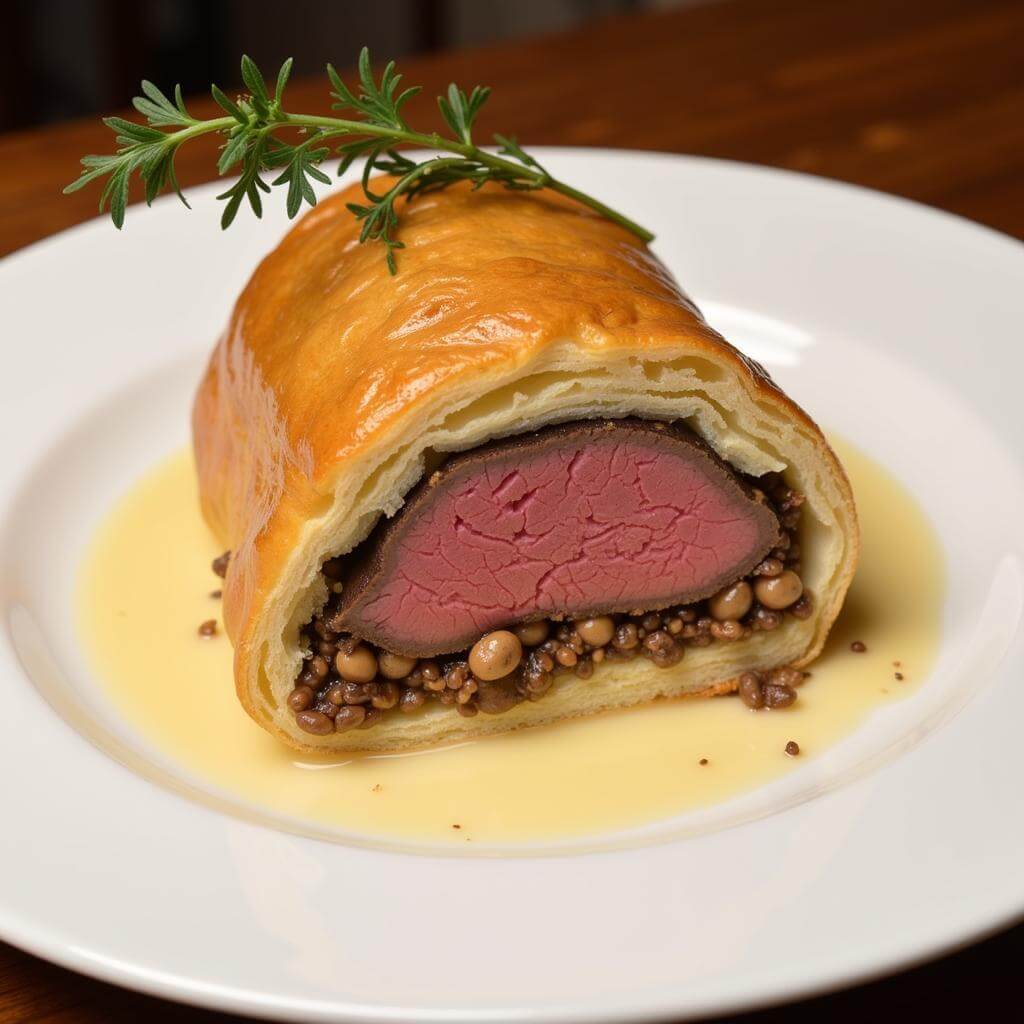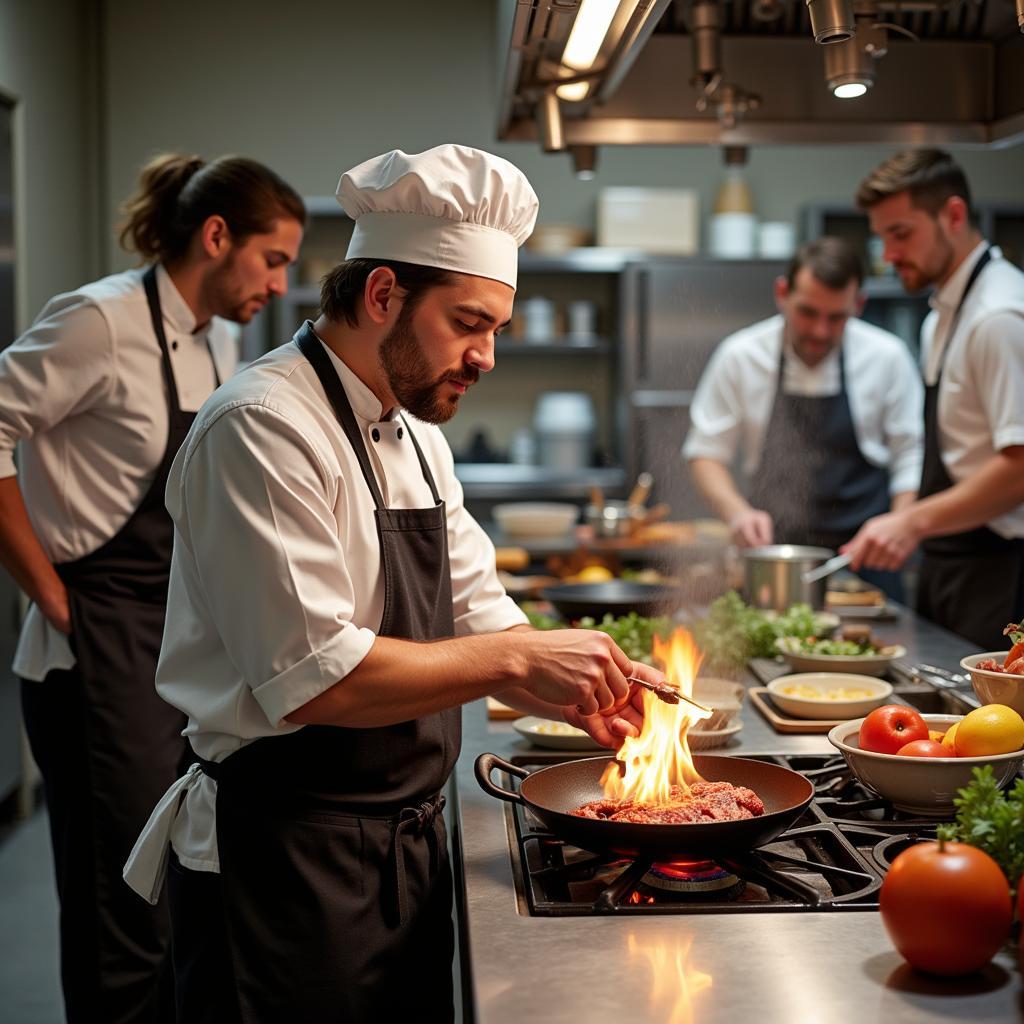Describing a dish you enjoyed at a celebration is a common topic in IELTS Speaking tests. This theme allows examiners to assess your ability to discuss food, culture, and personal experiences. To help you excel in this task, we’ll explore effective strategies and provide sample answers for different band scores.
Part 1: Introduction and Interview
In this section, the examiner may ask general questions about food and celebrations. Here’s a sample question with a suggested answer:
Q: What kind of food do you usually eat during celebrations in your country?
A: (Band 7-8 answer) In my country, we have a diverse range of dishes for celebrations, but one that stands out is describe a traditional dish you enjoy. It’s a festive staple that brings people together and symbolizes our cultural heritage. The dish typically includes ingredients like [list 2-3 key ingredients], which are carefully prepared to create a harmonious blend of flavors.
Part 2: Long Turn (Cue Card)
Here’s a sample cue card related to describing a dish you enjoyed at a celebration:
Describe a dish you enjoyed at a celebration
You should say:
- What the dish was
- When and where you ate it
- Who prepared it
- And explain why you enjoyed it so much
Sample Answer (Band 6-7):
I’d like to talk about a delicious dish I had during a describe a memorable dinner with your family. It was a homemade lasagna that we enjoyed last Christmas at my aunt’s house.
My aunt, who is an excellent cook, prepared this dish. She spent hours in the kitchen, layering pasta sheets with a rich meat sauce and creamy béchamel. The lasagna was baked to perfection, with a golden, crispy top that looked incredibly appetizing.
I enjoyed this dish so much because it was not only tasty but also had a special meaning. It was a family recipe passed down from my grandmother, so eating it brought back fond memories of past celebrations. The combination of flavors and textures was amazing – the savory meat sauce, creamy cheese, and al dente pasta created a perfect harmony in every bite.
Moreover, the warm and cozy atmosphere of our family gathering made the experience even more enjoyable. Sharing this delicious meal with my loved ones really enhanced the festive spirit of the occasion.
Sample Answer (Band 8-9):
I’d be delighted to describe a culinary masterpiece I had the pleasure of enjoying during a recent describe a family gathering you enjoyed. The dish in question was an exquisitely prepared beef Wellington, which I savored last New Year’s Eve at my parents’ home.
My father, an avid amateur chef with a penchant for gourmet cuisine, took on the challenge of creating this intricate dish. He spent the better part of two days meticulously preparing each component – from the perfectly seared beef tenderloin to the delicate mushroom duxelles and the golden, flaky puff pastry encasing it all.
This dish left an indelible impression on me for several reasons. Firstly, the sheer complexity of its preparation showcased my father’s culinary prowess and dedication to creating a memorable dining experience for our family. The beef was cooked to a perfect medium-rare, remaining succulent and tender, while the pastry provided a delightful textural contrast with its crisp layers.
Furthermore, the dish seemed to epitomize the essence of our celebration – it was ambitious, indulgent, and brought us all together in appreciation of both the food and the effort behind it. The rich, savory flavors were beautifully balanced, creating a harmonious blend that danced on the palate.
What made this experience truly special was the convivial atmosphere it fostered. As we gathered around the table, exclaiming over each slice and sharing our favorite aspects of the dish, I felt a profound sense of connection and gratitude. This beef Wellington wasn’t just a meal; it was a catalyst for creating lasting memories and strengthening family bonds.
 Sliced beef Wellington on an elegant plate
Sliced beef Wellington on an elegant plate
Follow-up Questions:
- Do you think you could recreate this dish yourself?
- How important is food in celebrations in your culture?
Sample answer for question 1 (Band 8-9):
While I’m certainly inspired to attempt recreating this culinary masterpiece, I must admit it would be a formidable challenge. The beef Wellington requires a high level of skill and precision that I’ve yet to attain in my cooking journey. However, I’m not one to shy away from a challenge. I’d likely start by thoroughly researching the techniques involved, perhaps even taking a specialized cooking class. I’d also practice each component separately – perfecting the mushroom duxelles, mastering the art of wrapping the beef in pastry, and honing my timing to achieve that perfect medium-rare. It would undoubtedly be a labor of love, but the satisfaction of successfully recreating such an impressive dish would make the effort worthwhile. Who knows? With enough practice, I might even be able to add my own creative twist to the recipe, making it a new family tradition.
Part 3: Two-way Discussion
Q: How have eating habits changed in your country in recent years?
A: (Band 7-8 answer) In recent years, there’s been a noticeable shift in eating habits in my country. People are becoming more health-conscious and environmentally aware, leading to an increase in plant-based diets and locally sourced produce. There’s also been a surge in interest for international cuisines, with many restaurants offering fusion dishes that blend traditional and foreign flavors. Additionally, the fast-paced lifestyle has led to a rise in convenience foods and meal delivery services, though there’s also a counter-movement promoting slow food and home cooking.
A: (Band 8-9 answer) The evolution of eating habits in my country has been quite remarkable in recent years, reflecting broader societal changes. We’ve witnessed a significant paradigm shift towards more health-oriented and sustainable dietary choices. There’s been a burgeoning interest in plant-based nutrition, with veganism and vegetarianism gaining substantial traction, not just as diets but as lifestyle choices. This trend is partly driven by increasing awareness of the environmental impact of food production and a growing concern for animal welfare.
Simultaneously, we’ve seen a resurgence of interest in our culinary heritage, with many people rediscovering and reimagining traditional dishes using modern cooking techniques and presentation styles. This has led to an interesting juxtaposition of old and new in our food culture.
The globalization of taste has also played a significant role, with international cuisines becoming more accessible and popular. This has resulted in a fascinating fusion of flavors and techniques, creating unique culinary experiences that bridge cultural divides.
However, it’s worth noting that the demands of modern life have also influenced eating habits. The prevalence of busy lifestyles has led to an increased reliance on convenience foods and meal delivery services. Interestingly, this has been counterbalanced by a growing movement advocating for mindful eating and the importance of shared meals, especially in the context of describe a memorable dinner with your family.
Lastly, there’s been a marked increase in dietary consciousness, with more people tailoring their diets to specific health goals or restrictions, such as gluten-free, keto, or paleo diets. This has led to a more diverse and inclusive food landscape, catering to a wide range of dietary needs and preferences.
Key Vocabulary and Phrases
-
Culinary masterpiece /ˈkʌlɪnəri ˈmɑːstəpiːs/ (noun): An outstanding achievement in cooking.
Example: The chef’s signature dish was a true culinary masterpiece. -
Exquisitely prepared /ɪkˈskwɪzɪtli prɪˈpeəd/ (adverb + adjective): Prepared with great care and detail.
Example: The dessert was exquisitely prepared, with intricate sugar work decorations. -
Penchant for /ˈpɛnʃ(ə)nt fɔː/ (noun): A strong liking for something.
Example: She has a penchant for spicy foods from around the world. -
Epitomize /ɪˈpɪtəmaɪz/ (verb): To be a perfect example of something.
Example: This dish epitomizes the flavors of Mediterranean cuisine. -
Convivial atmosphere /kənˈvɪviəl ˈætməsfɪə/ (adjective + noun): A friendly, lively, and enjoyable environment.
Example: The dinner party had a convivial atmosphere, with guests laughing and sharing stories.
 Chef demonstrating cooking techniques
Chef demonstrating cooking techniques
Tips from an IELTS Speaking Examiner
- Practice describing dishes in detail, focusing on appearance, taste, texture, and aroma.
- Use a variety of adjectives to make your description more vivid and engaging.
- Incorporate personal anecdotes to add depth to your responses and showcase your language skills.
- Develop your vocabulary related to food, cooking methods, and cultural celebrations.
- Practice speaking about food-related topics regularly to improve fluency and confidence.
Remember, the key to success in IELTS Speaking is not just about using complex vocabulary, but also about expressing your ideas clearly and confidently. Good luck with your IELTS preparation!


